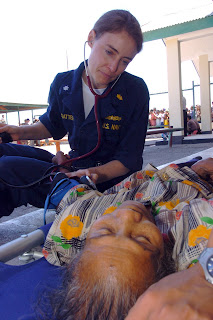Journal Club Summary
Methodology Score: 4.5/5
Usefulness Score: 4/5
Thiruganasambandamoorthy V, et al.
CMAJ. 2016 Sep 6;188(12):E289-98
This large multicenter prospective ED syncope study derived a methodologically robust risk tool for prediction of 30-day serious adverse events after ED disposition. This risk score will aid in ED management of patients: those at higher-risk require further management (thorough assessment and investigations including outpatient cardiac monitoring); and once validated the tool can aid in identification and quick disposition of low-risk patients.
By: Dr. Robert Ohle
(Full Disclosure: Dr. Thiruganasambandanmoorthy is an EMOttawa staff and was the lead author of the study. For a full explanation of the Canadian Syncope Risk Scale from the author see this post)
Epi lesson
In this era of clinical decision tools being developed for almost anything, we need to think will a clinical decision tool be helpful and how to use them. There are methodological standards that have been developed (i.e. when should one try to develop a tool, how to do it and the stages towards developing a robust tool).
1. There must be a need due to prevalence of the clinical condition and current practice. Such a need must be a belief among physicians practicing in that area
2. The outcome or diagnosis to be predicted must be clearly defined. Assessment of the outcome should be made without knowledge of the predictor variables (Blinded outcome assessment).
3. The clinical findings to be used as predictors must be clearly defined, standardized, and clinically sensible and their assessment must be done without the knowledge of the outcome (Blinding for the outcome, blinded variable collection).
4. The reliability or reproducibility of the predictor findings must be clearly demonstrated (usually reported as kappa for the predictors).
5. To increase generalizability, the subjects in the study should be selected without bias and should represent a wide spectrum of patients with and without the outcome.
6. Sound mathematical techniques must be used for deriving the tools and must be clearly explained.
7.Decision tools should be clinically sensible and their accuracy must be demonstrated.
8. Prospective validation is an essential step in the evolution of this form of decision support. Implementation phase (to demonstrate the true effect on patient care) is the ultimate test of a decision tool.
Not all clinical decision tools are developed for simple decisions (x-ray or not), some are developed to aid complex decision making process. As physicians, we must use our clinical acumen to incorporate these tools in our practice (e.g. using the risk factors identified among syncope patients to ensure that no serious conditions already exist, among patients with multiple comorbidities using these tools to make shared decisions with patients/families or identification of patients for further outpatient consultations/testing).
By: Dr. Venkatesh Thiruganasambandamoorthy

